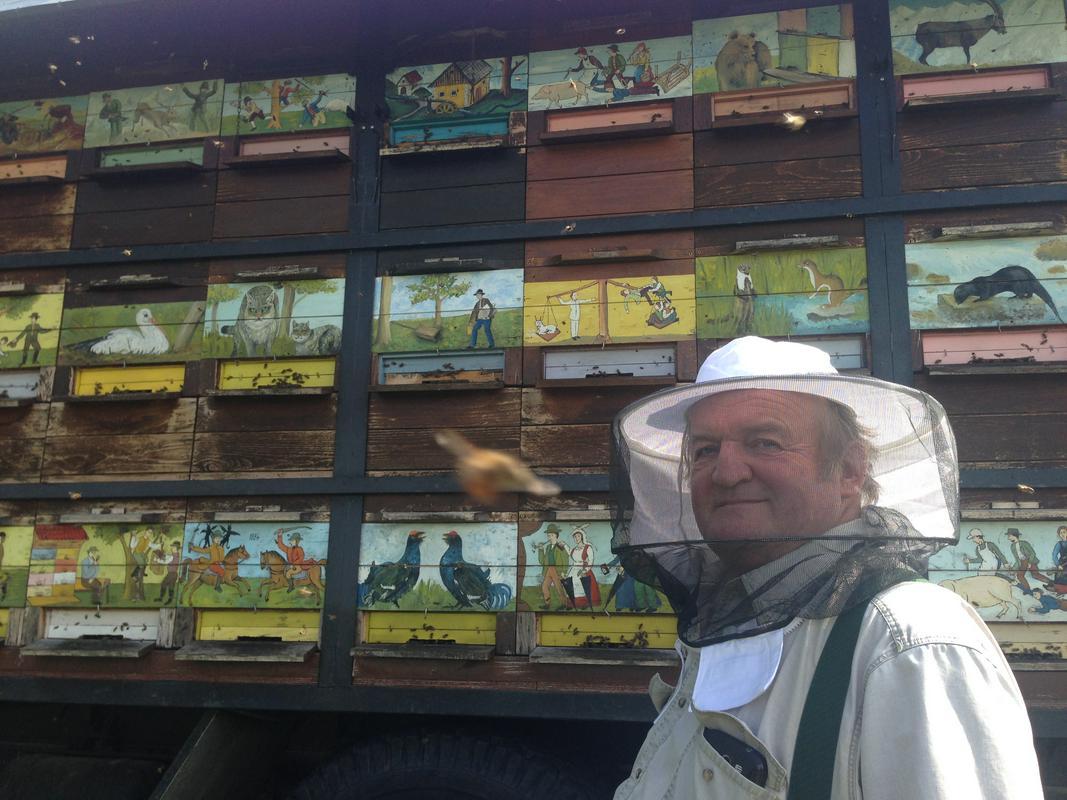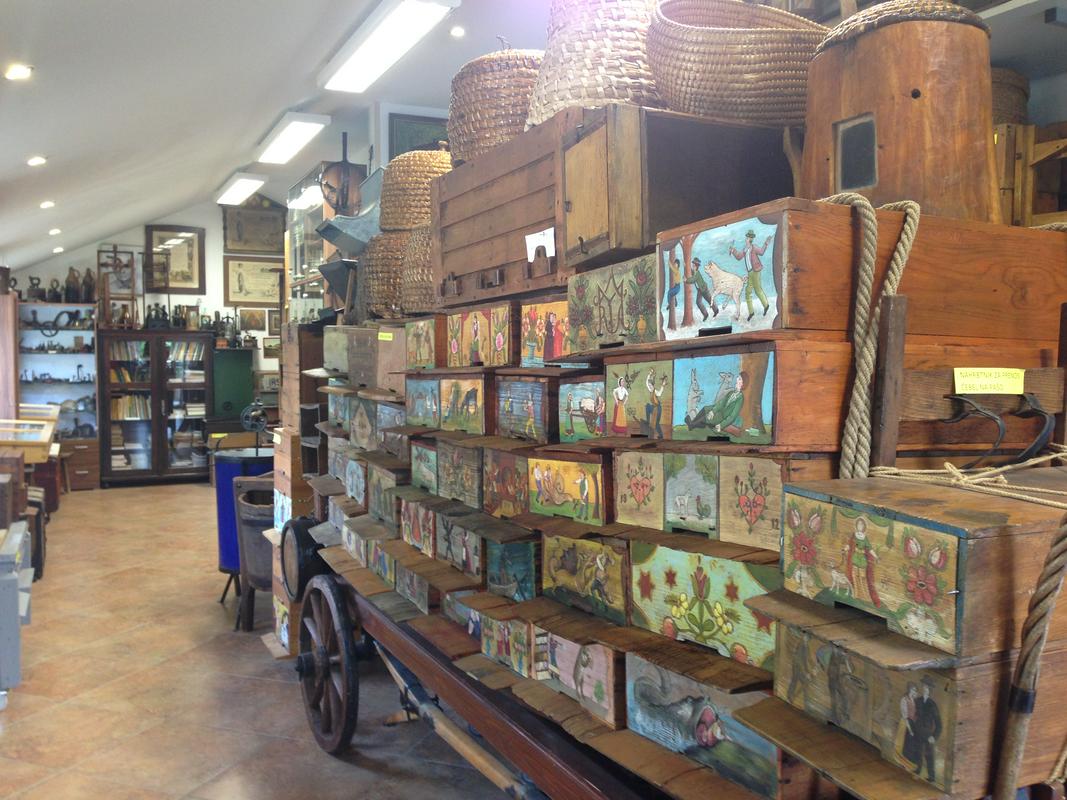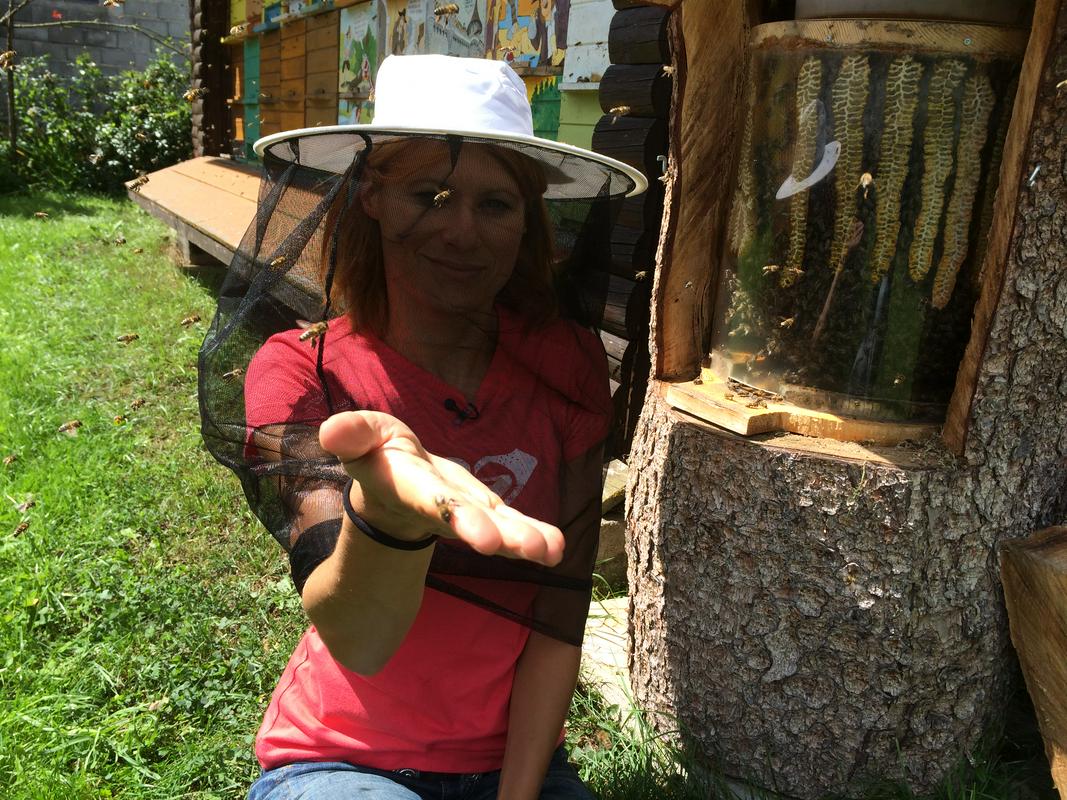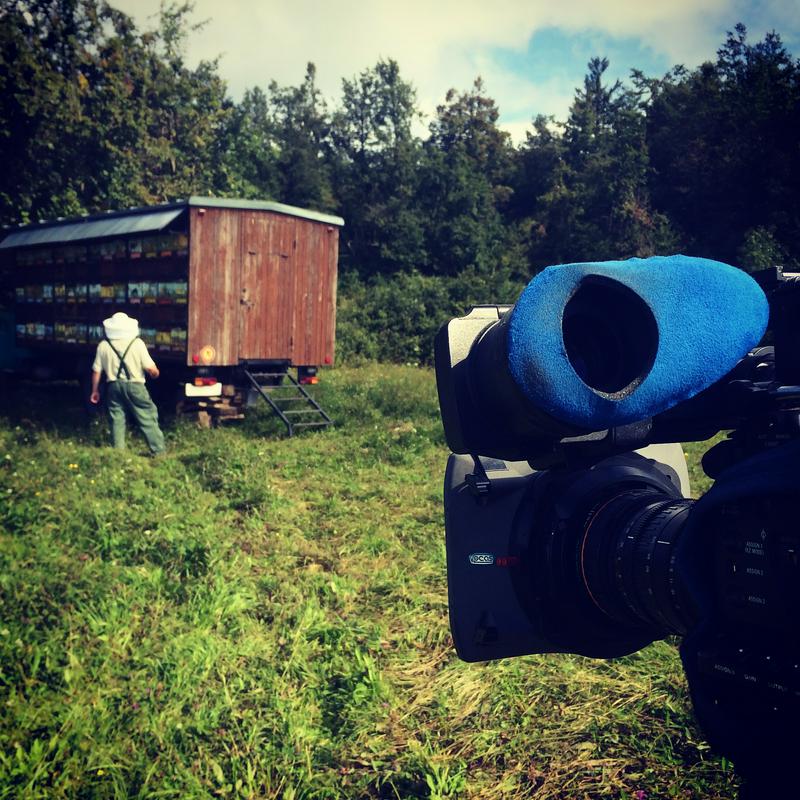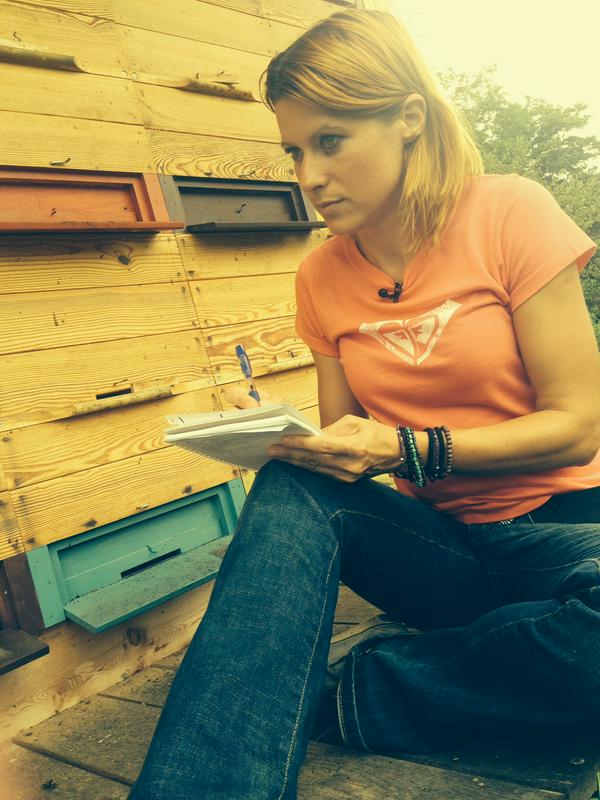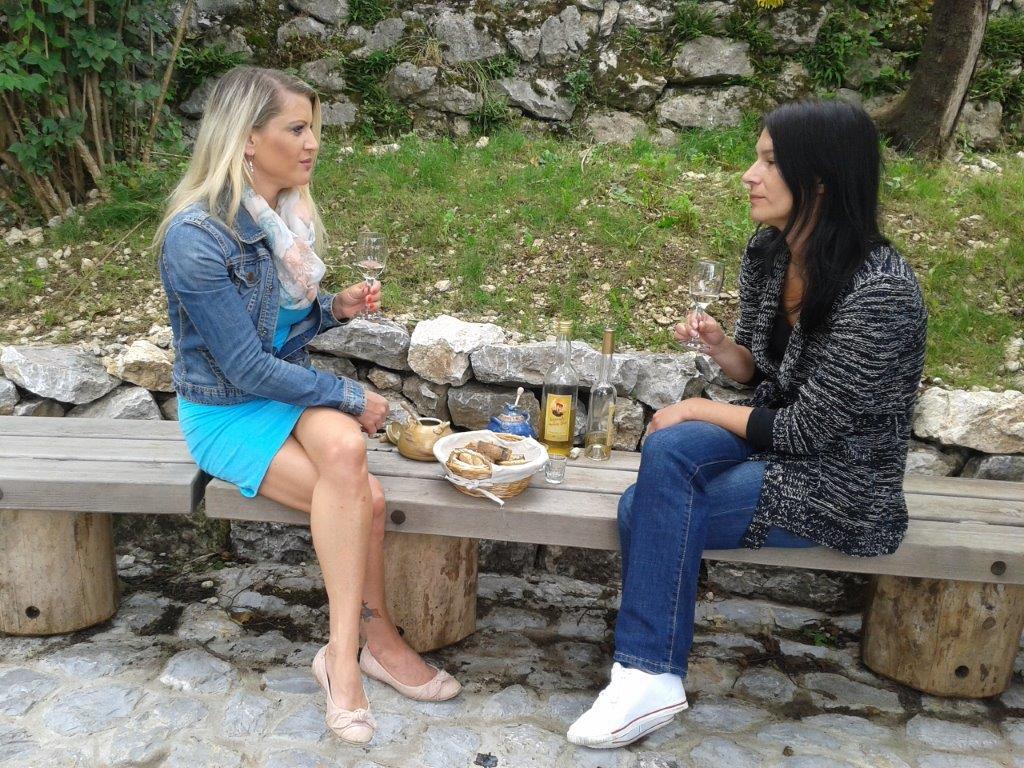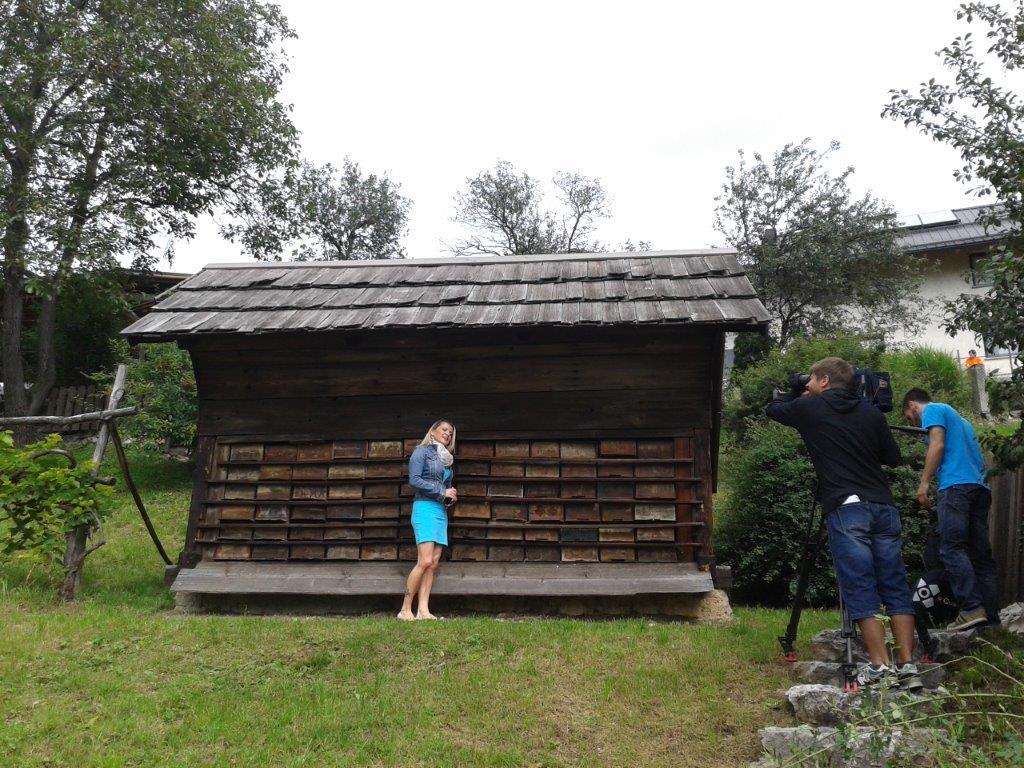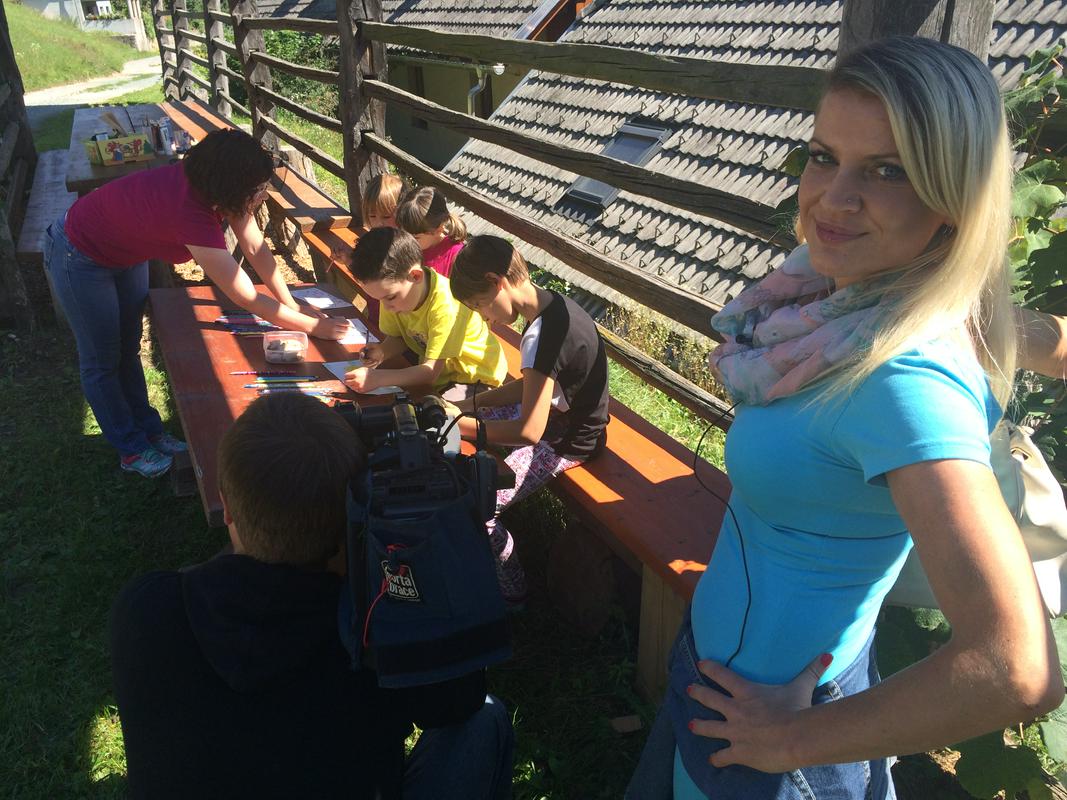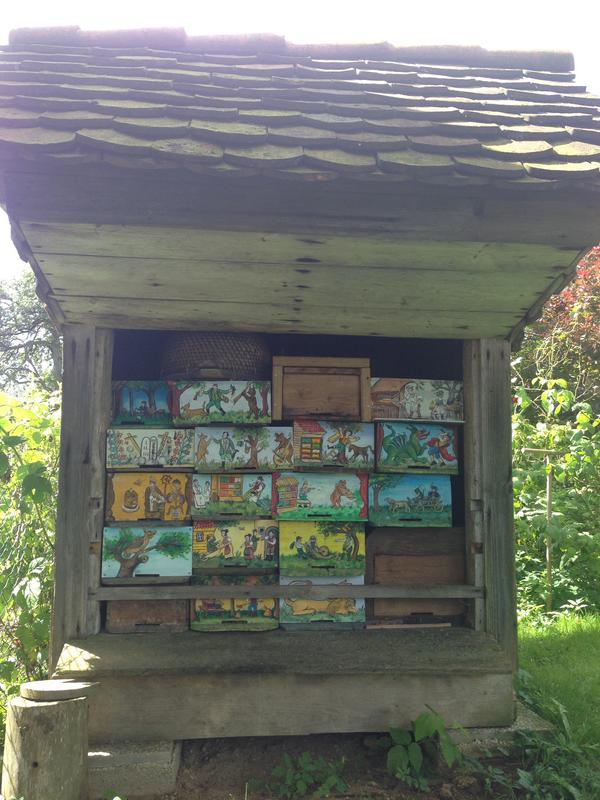
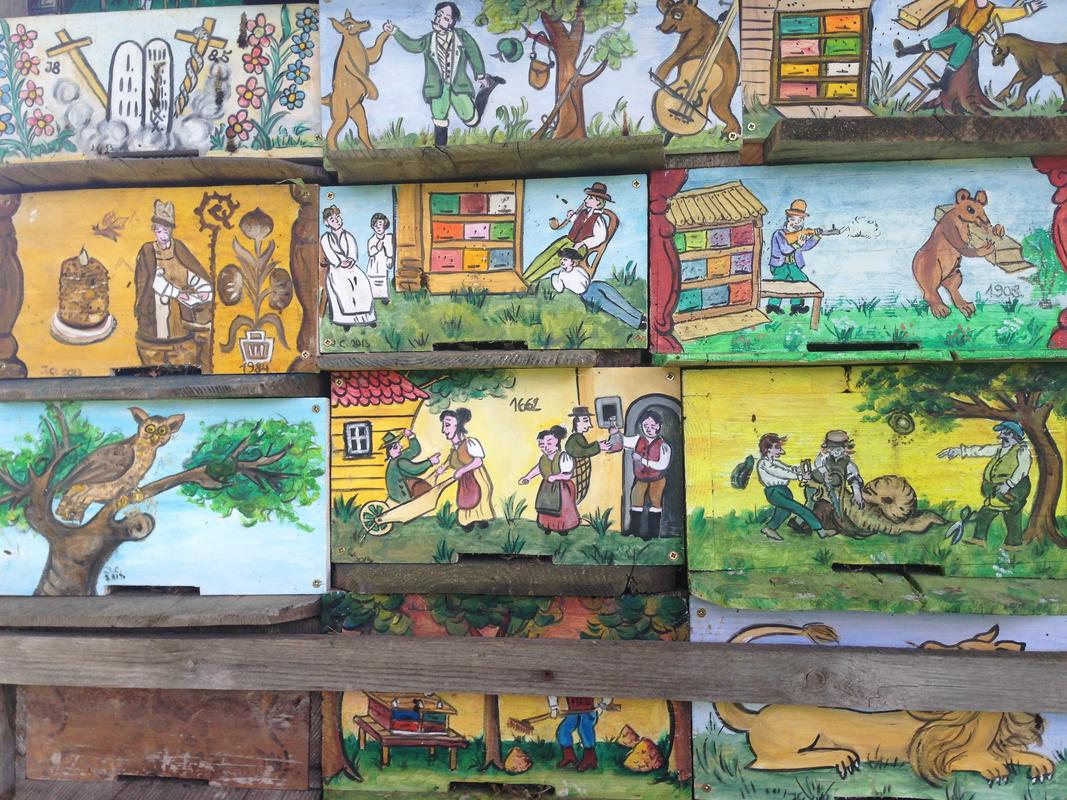
This time the show "Na lepše" concentrates on api tourism, where the Slovenians are breaking ground on a world scale. We are talking about environmentally and socially responsible tourism, with emphasize on education, teaching people of the importance of bees and their influence on both the environment and humans. All over Slovenia we have more than 10,000 architecturally interesting beehives unlike any others in the world, which reflect the rich history of apiculture.
Beekeeping is a branch of agriculture which was the first to bring an income to our farmers in spring time – through sale of beehives, and honey. Beekeeping in Slovenia exceeds the average, as we have over four beekeepers per one thousand of inhabitants. A bee has a special status in our minds as well – in our language a bee 'dies', and in our country bees live in beehives with artfully painted panels.
The api adventures are organized under the ApiRoutes brand, developed by the Slovenian Beekeepers Association and Aritours Travel Agency. Guided tours are being organized with visits to beekeepers and museums of apiculture, along with workshops where participants can learn to paint beehive panels, make decorative object from bee wax, and bake treats from honey dough. Attention is especially drawn to the novelty – medical api therapy in a typical Slovenian beehive, where the visitors lie on beehives and relax during honey massage, inhale beehive air aerosol, and listen to the background sound of beehive buzz.
Slovenia has more than 7,000 beekeepers, yet at the moment only 40 of them practice api tourism. Those living in the vicinity of tourist places, especially those close to thermal spas, develop fast. In the Kočevje area bee tourism is complemented by forest educational paths and bear photo tours. In the Goričko region tourist can learn about ecological and biodynamic beekeeping, and in the vicinity of Banovci a museum can be visited, exhibiting an eight-frame beehive.
Žirovnica Tourism and Cultural Office successfully upgraded their tourist offer with a Cultural Heritage Path, intertwined with bee contents, and the story of Anton Janša – the first beekeeper of the imperial Vienna, named by Maria Theresia herself. And everywhere you can get acquainted with the autochthonous Carniolan honey bee, 'Kranjska sivka', one of the three of the best quality, and the most peaceable bee species. New bee museums are being opened all over Slovenia – in Šmarje-Sap, in Spodnji Brnik, and in Mežica, where Galob's beekeeper collection is exhibited.
A visit to a beehive can be compared to a visit to a wine cellar – but instead of tasting vine, you taste honey and gastronomic treats made of honey. Beekeepers explain to their guests the life of bees, let them taste propolis, pollen, and royal jelly. The Slovenian advantage can be considered honey drinks as well; due to the quality of their products the Slovenian beekeepers are classified among the very best in the world. The sparkling mead, fermented inside bottles, is an outstanding product. 40 grams of honey are required for one glass of this drink, and in order to collect such quantity bees must visit approximately one million of blossoms. The production of honey drinks in our country started already in the 14th century, and it kept growing until the 18th century, when honey drinks were mostly replaced by beverages made of cheaper raw materials.
Marjana Grčman, TV Slovenija
Translated by G. K.




















































